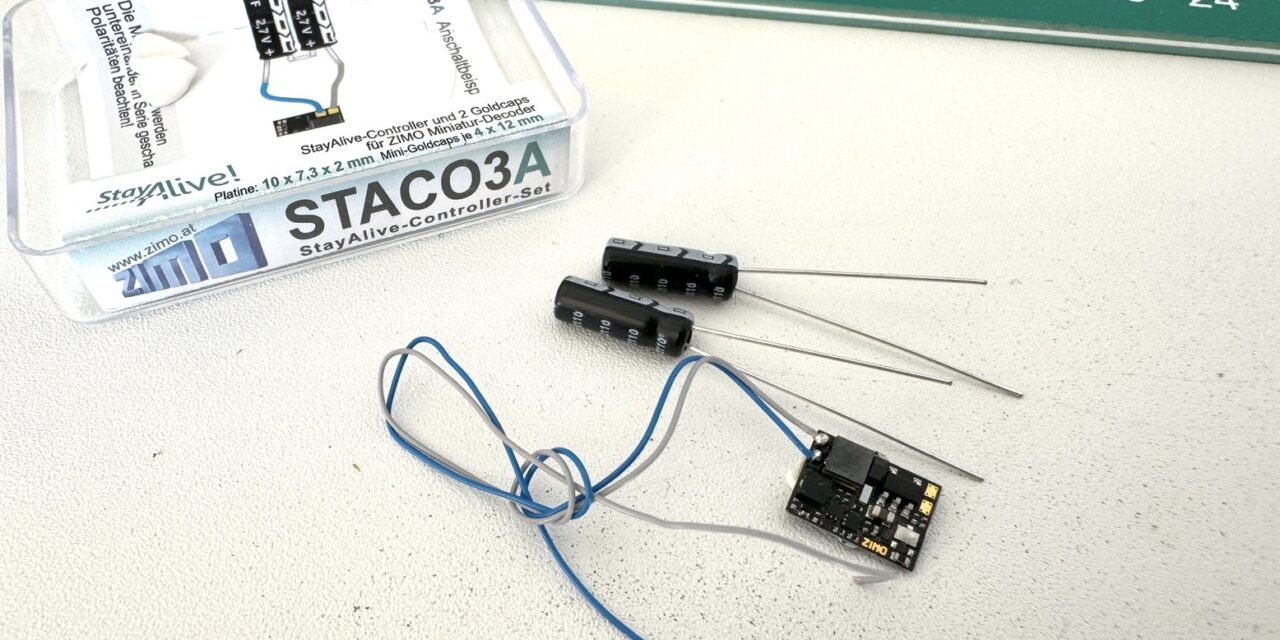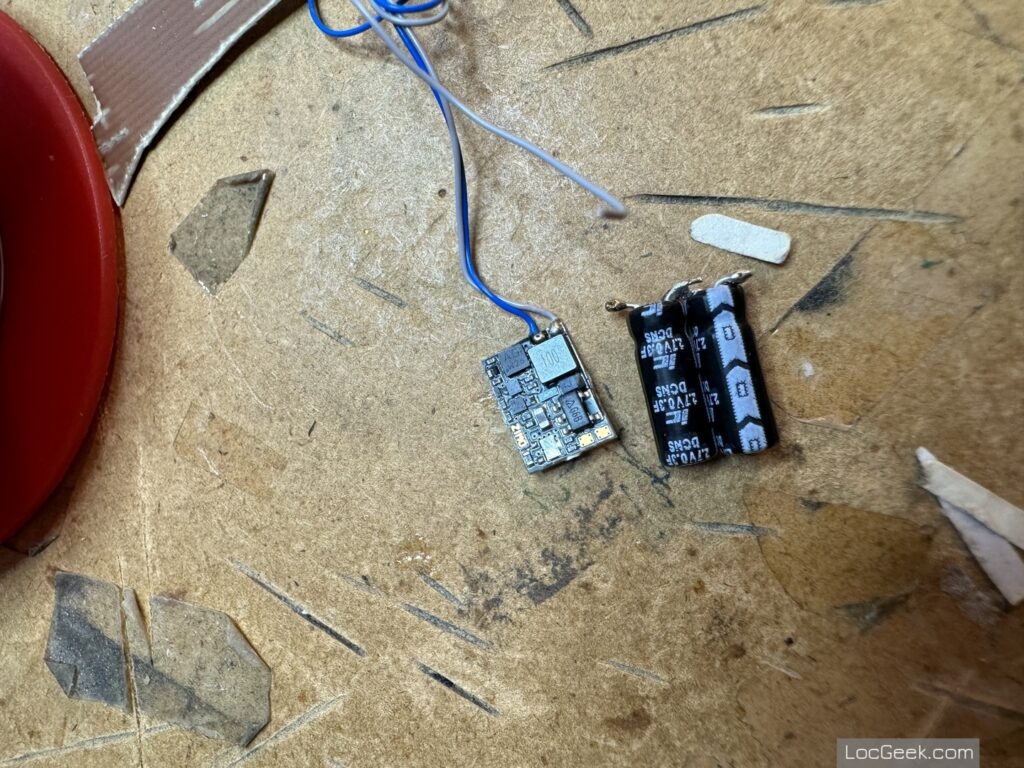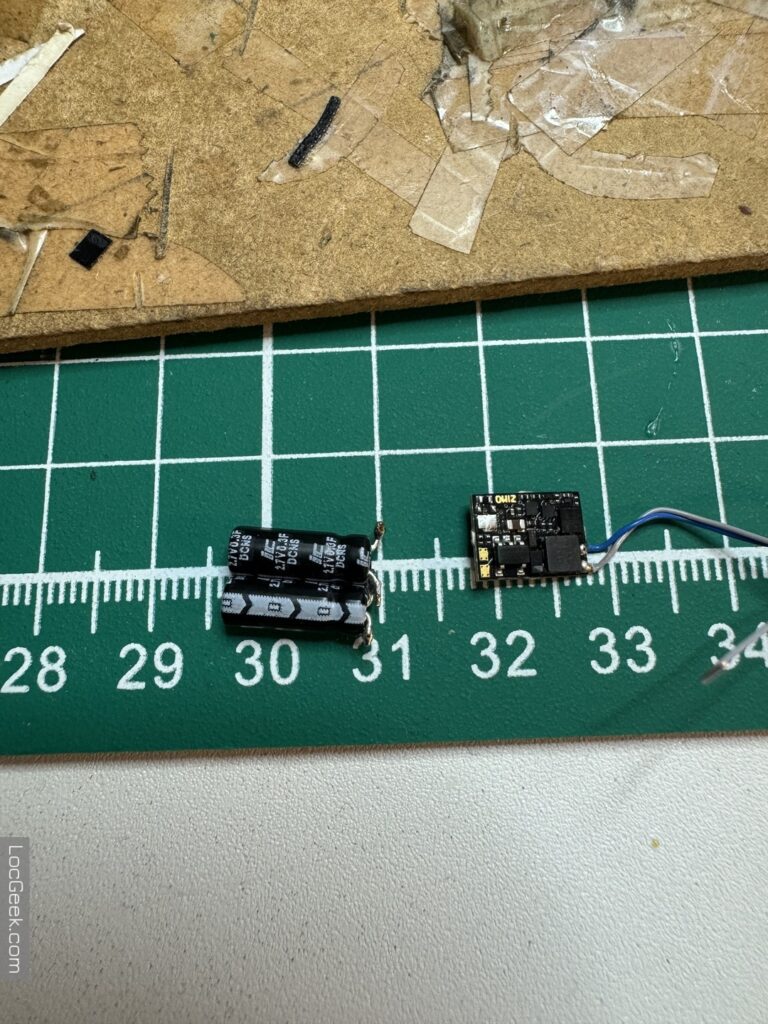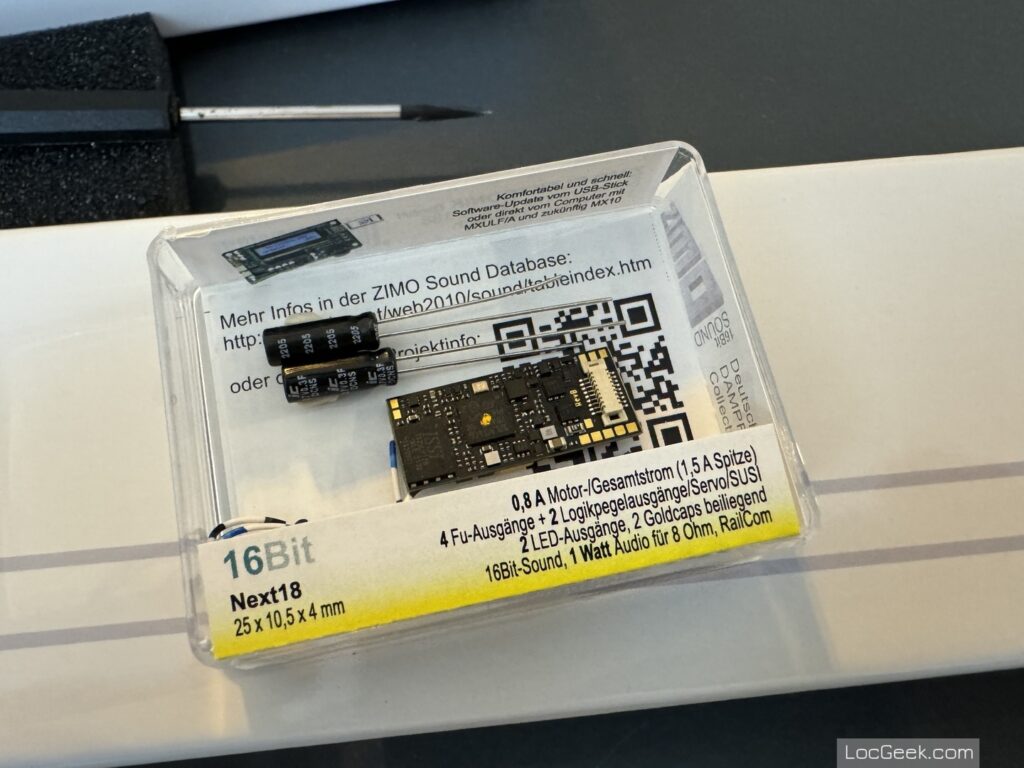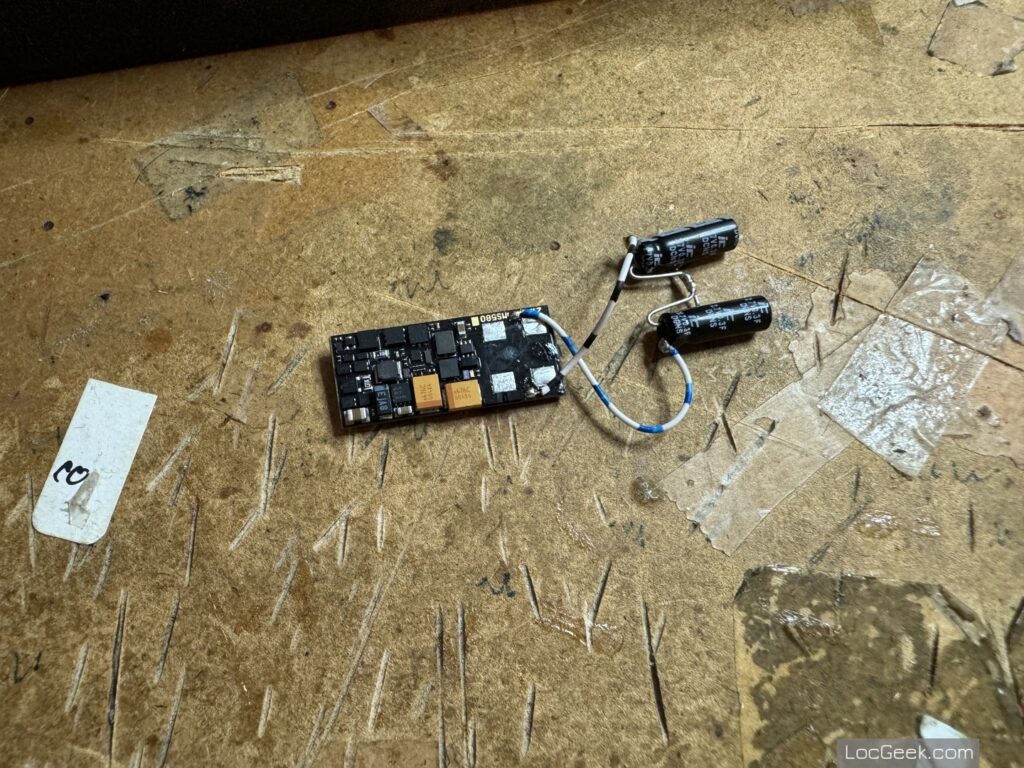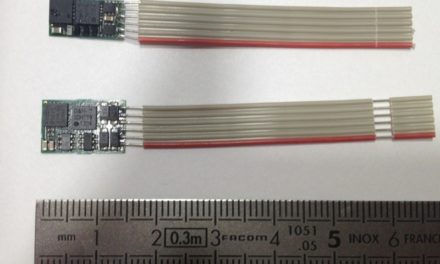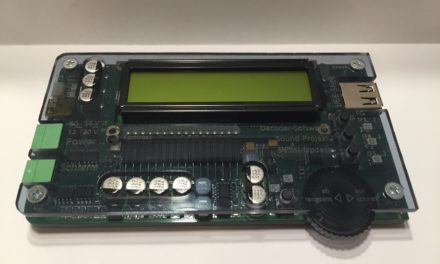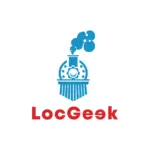I’ve been adding capacitors to my locomotives for smoother rides for a while now, but the Zimo STACO product range represents a significant advancement. Here is my take after testing it.
Locomotives stopping or flickering? Capacitors to the rescue
Especially in N scale, where locomotives are lightweight, the concept of adding a power buffer to locomotives is crucial for ensuring better driving characteristics. This is especially true in scenarios where locomotives encounter dirty tracks or complex switch areas, which can often lead to power interruptions and hinder smooth operation. To combat these challenges, incorporating capacitors as a power reserve has been a common practice among enthusiasts, including myself.
I’ve documented my journey of integrating capacitors into my engines, highlighting their role in improving locomotive behavior on dirty tracks and enhancing overall performance. For example, in my post about using all SUSI outputs of N-scale DCC decoders, I discussed the benefits of adding a power reserve with capacitors to improve locomotive behavior on dirty tracks (see here). Similarly, in the conversion of the Hobbytrain BR 363 Cottbus to DCC, capacitors were added to ensure smoother operation (here). The Arnold Henschel-Wegmann’s DCC sound conversion also involved the use of capacitors to support multiple decoders, enhancing the total train capacity to 1540uF (here).
These experiences underscore the significant impact that capacitors have had in improving the performance of N scale locomotives. However, while these traditional capacitor installations have brought improvements, they often fell short of delivering the optimal level of performance and reliability that I sought. This is where the Zimo STACO product range comes into play, offering a more advanced solution to the power buffering challenge in model railroading.
Key Features of Zimo STACO
There are several models of the STACO range, that can be connected to most DCC decoders with a bit of DIY .
Basically, the STACO modules come in two parts:
- The STACO electronic board, to connect to the DCC decoder (+/GND)
- The provided Goldcap capacitors, to connect to the STACO board
There are also the Next18 sound decoders MS580N18G / MS581N18G. Those are a declination of this concept: they actually have a STACO module directly on board, so you just need to connect the goldcaps.
- Goldcap Technology: One of the standout features of the Zimo STACO range is its use of goldcap capacitors. While the concept of using capacitors for energy storage in DCC systems is not new, the STACO range marks the first time such technology has been made available in form factors ideal for N scale models.
- Enhanced Capacity: The capacity offered by the STACO range’s goldcaps is a game-changer compared to standard capacitors. For example, the STACO1 model offers 100,000uF of capacity in a very compact package, consisting of a charging controller board and multiple capacitors. This significantly boosts the energy reserve available to keep a locomotive running smoothly over dirty or uneven track sections.
- Compatibility and Ease of Use: The STACO range is designed for ease of use with a bit of DIY spirit. Although some soldering is required, these units can work with most DCC decoders, sometimes necessitating a few CV setting adjustments. They are particularly suitable for MX- or MS-type miniature decoders from Zimo, but as long as your decoder has a “+” or “SUSI +” connector and a “GND” connector, it may be compatible. The only tricky part may be to find those pins on your decoder (careful, you could destroy it!).
- Fit for N Scale Engines: The compact size of the STACO units, such as the STACO3A, makes them a good fit for many N scale engines. It’s not a small as SMS capacitors, but it will fit in many cases.
Overview of the Zimo STACO Product Range
There are several models, for details you can refer to the Zimo page at http://www.zimo.at/web2010/products/energiespeicher_EN.htm :
1. STACO1
- The original product, launched around 2021
- With up to 0.3 F (that is 300.000 µF !) if using the 3 Goldcaps
2. STACO2A and STACO2B with Next18 Interface
- Purpose: Equips models with a Next-18 interface and energy storage.
- Design: Dual function as a StayAlive controller and adapter board.
- STACO2A and STACO2B Options: Available with either 0.3 F/2.7 V or 1 F/2.7 V mini gold caps.
- Use Case: Ideal for technical conversions of analog locomotives to digital
3. STACO3A and STACO3B
- Design: Special variants of the STACO1, more compact.
- Size: 10×7.3×2 mm for both versions.
- STACO3A Capacitors: 2x mini gold caps, 0.3 F/2.7 V each, 4 x 12 mm.
- STACO3B Capacitors: 2x mini gold caps, 1 F/2.7 V each, 6.4 x 9.8 mm.
And also, as I said, there is also the MS581N18 sound decoder (replacing the MS580N18) that has onboard STACO capability:
Personal Recommendation
From a personal standpoint, the Zimo STACO range comes highly recommended, especially for modelers looking to enhance their locomotives’ performance. I plan to fit a STACO unit in every locomotive where space permits and consider retrofitting many others. The reliability and smooth operation they offer make them a worthwhile investment for any serious model railroader.
Additional Resources
For those interested in seeing the STACO range in action, there are YouTube videos available that demonstrate the performance of these units. One such video showcases a comparison of different stay-alive units, including the STACO. It is in German, but you can use automated subtitles:
You can also have a look at my first conversion using the STACO technology (using an MS580N18G with onboard STACO): https://www.locgeek.com/2023/11/sncf-picasso-x3800-railcar-a-great-n-scale-model/
Conclusion
The Zimo STACO product range is great. As always from Zimo, the website is ugly and looks like it’s from the 1990’s (a pet peeve of mine), the products look overly complicated…but they work well, and demonstrate amazing engineering. For less than about €20 per module for each engine, it will likely become a standard in my futur DCC conversions!
Stay tuned to LocGeek for more updates and insights into the world of N scale model railroading, anytime I’ve got some spare time for the hobby.
Do you have experience with adding capacitors too? Feedback on other goldcap based solutions? Don’t hesitate to share in the comments below.
Reminder: I am a hobbyist and these articles only represent my personal views. I am not receiving any compensation, in any form, from the brands or stores mentioned here. The product names, marketing names, and brands mentioned here are the property of their respective owners.

